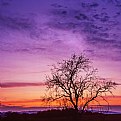First up, have you not shot with studio lighting before? It may be asking a fair bit to learn on assignment, especially given that hair shots often require a few tricks to light up the old follicles! If I was you I would get down to your nearest pro-photostore, and tell them what you are doing and ask for a long rental and lots of advice, so you can practice beforehand. You will probably want a few light sources for hair-/back- lights, etc..
If using flash-type lighting make sure that you can synch properly with the Sony's hotshoe. I just use pretty crude halogen lighting in my home studio - took a while to get it right but it works well and the Sony white balances it superbly (but things do get a bit hot..). Continuous lighting is good because you can see what you are doing as you set up. But strobe lighting avoids all the problems of heat, fire hazards, glare and power consumption..
If you use continuous lighting, don't mix it with the flash unless you want some interesting color balancing problems..
I always shoot in Fine mode, highest res. I normally use JPEG files, because the quality is generally good enough to satisfy my customers right up to 11"x17" prints. (However if I am going to do any post-processing, I immediately resave as a tif to avoid re-compression problems.) TIF's just eat up too many memory cards if I'm on location - if you have the luxury of being able to offload your images during the shoot, by all means use tif's.
The 72 dpi bit is only relevant to a particular size. It is the NUMBER of pixels that is important. Stick to the highest setting (2560x1920). That will get you a lovely 11x8, and a pretty darn good 11x17 with care.
I have done quite a bit of work recently for a lingerie shop (lucky me!) and they *love* the results - have fun..!
|
















